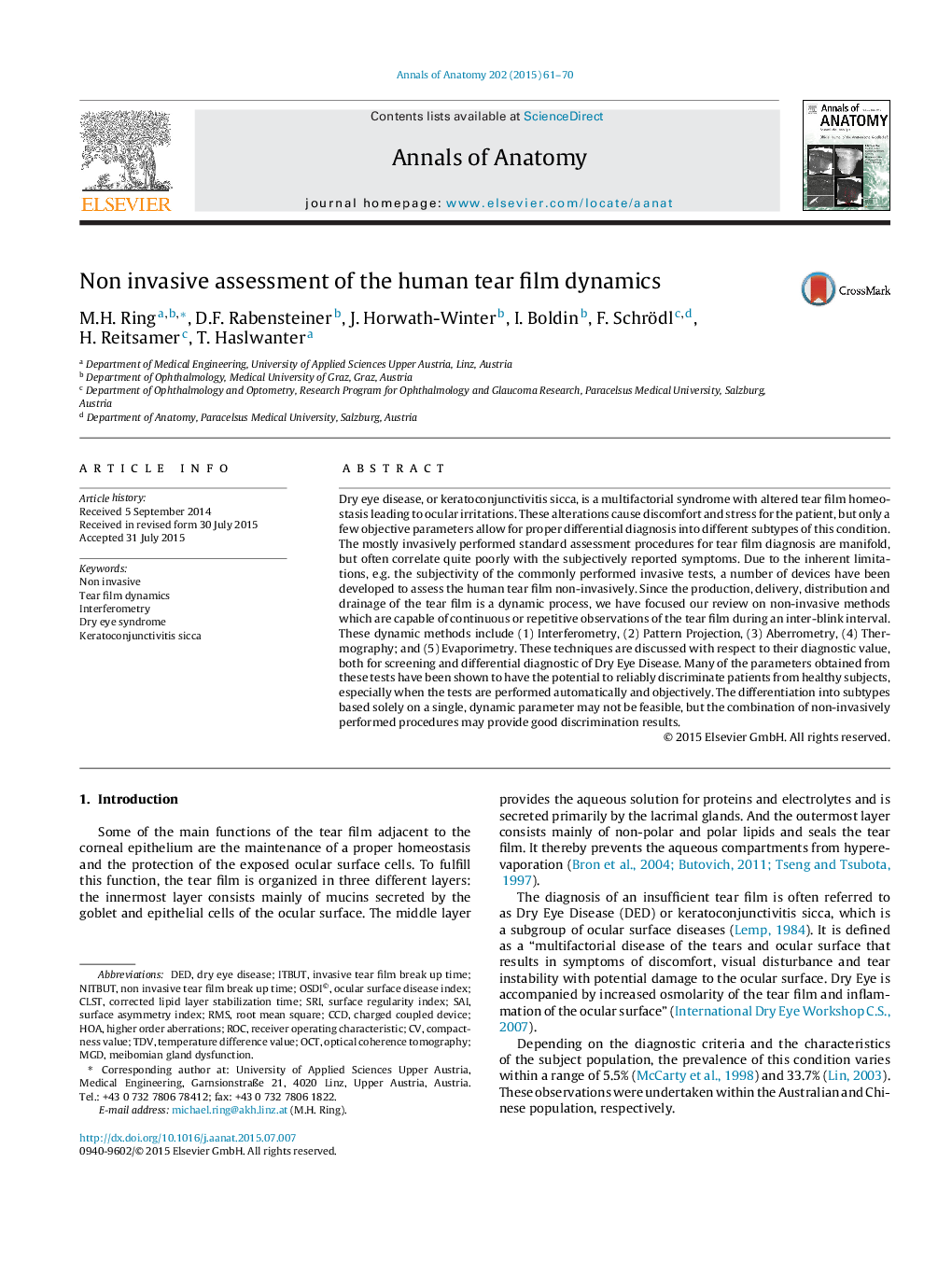| Article ID | Journal | Published Year | Pages | File Type |
|---|---|---|---|---|
| 8460911 | Annals of Anatomy - Anatomischer Anzeiger | 2015 | 10 Pages |
Abstract
Dry eye disease, or keratoconjunctivitis sicca, is a multifactorial syndrome with altered tear film homeostasis leading to ocular irritations. These alterations cause discomfort and stress for the patient, but only a few objective parameters allow for proper differential diagnosis into different subtypes of this condition. The mostly invasively performed standard assessment procedures for tear film diagnosis are manifold, but often correlate quite poorly with the subjectively reported symptoms. Due to the inherent limitations, e.g. the subjectivity of the commonly performed invasive tests, a number of devices have been developed to assess the human tear film non-invasively. Since the production, delivery, distribution and drainage of the tear film is a dynamic process, we have focused our review on non-invasive methods which are capable of continuous or repetitive observations of the tear film during an inter-blink interval. These dynamic methods include (1) Interferometry, (2) Pattern Projection, (3) Aberrometry, (4) Thermography; and (5) Evaporimetry. These techniques are discussed with respect to their diagnostic value, both for screening and differential diagnostic of Dry Eye Disease. Many of the parameters obtained from these tests have been shown to have the potential to reliably discriminate patients from healthy subjects, especially when the tests are performed automatically and objectively. The differentiation into subtypes based solely on a single, dynamic parameter may not be feasible, but the combination of non-invasively performed procedures may provide good discrimination results.
Keywords
TDVkeratoconjunctivitis siccaMGDDEDTear film dynamicsCCDSAISRIRMSROCmeibomian gland dysfunctionHigher order aberrationsOctDry eye diseaseInterferometryOptical coherence tomographycharged coupled devicedry eye syndromeOcular Surface Disease IndexNon invasiveroot mean squareHOAreceiver operating characteristic
Related Topics
Life Sciences
Biochemistry, Genetics and Molecular Biology
Cell Biology
Authors
M.H. Ring, D.F. Rabensteiner, J. Horwath-Winter, I. Boldin, F. Schrödl, H. Reitsamer, T. Haslwanter,
